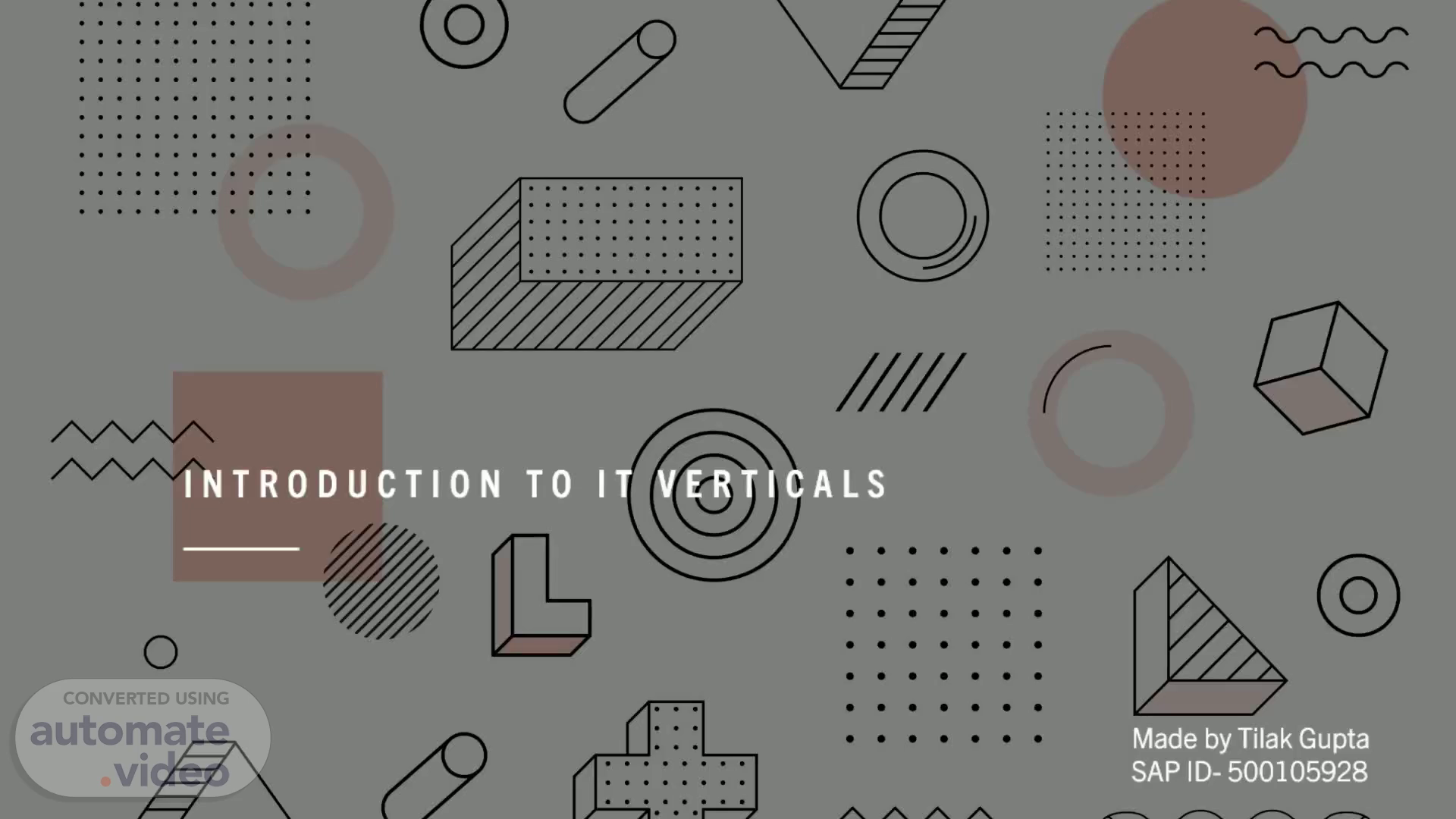
Introduction TO it verticals
Scene 1 (0s)
[Audio] Introduction to IT Verticals assignment by tilak Gupta SAP ID- 500105928.
Scene 2 (9s)
[Audio] Overview of cloud computing A technology-based service paradigm known as "cloud computing" offers online access to common pools of computing resources such servers, storage, databases, software, and intelligence Platform as a Service , Infrastructure as a Service , and Software as a Service are the three primary delivery models for cloud computing IaaS offers virtualized computing infrastructure with scaling up and down capabilities, including virtual machines, storage, and networking A development platform known as PaaS makes it possible to create, deploy, and maintain applications without the need to manage the underlying infrastructure. SaaS eliminates the requirement for installation and upkeep on individual computers by offering online access to software programs..
Scene 3 (1m 4s)
[Audio] Career Opportunities of cloud computing In this pie chart you can see different types of career opportunities.
Scene 4 (1m 33s)
[Audio] How to make career in cloud computing Obtain a solid understanding of computer science and IT: You need a solid background in computer science, proficiency in as well as understanding of operating systems, databases ,in order to make career in cloud computing Gain practical experience, whether alone or in a group, is one of the greatest ways to get experience with cloud computing Pursue certifications: You may show off your expertise and abilities to prospective employers by earning cloud computing certifications like AWS Certified Solutions Architect, Microsoft Certified: Azure Solutions Architect, and Google Cloud Professional Cloud Architect Keep up with the latest developments in cloud computing: The field of cloud computing is rapidly evolving, and it's important to stay current with the latest trends, technologies, and best practices. This can be done through attending conferences and workshops, reading industry blogs and publications, and participating in online forums and discussion groups.
Scene 5 (2m 39s)
[Audio] How cloud computing can address disaster response first of all, Rapid resource deployment is made possible by cloud computing, which gives businesses the flexibility to swiftly provide and deploy resources like virtual machines, storage, and apps when tragedy strikes Then, Information sharing and collaboration during disaster response are made possible by the safe, scalable, and accessible information management capabilities offered by cloud computing Then finally Real-time communication and coordination: Cloud computing offers businesses instant messaging, video conferencing, and project management applications as real-time collaboration and communication tools.
Scene 6 (3m 23s)
[Audio] Real-world examples of cloud computing being used to address disaster response Here are some of the real-word examples such as: 1) As a result of Hurricane Sandy in 2012, the American Red Cross used cloud computing to help organise emergency response efforts 2) Earthquakes in Japan: Following the earthquake and tsunami that hit Japan in 2011, disaster response activities were coordinated with the use of cloud computing 3) California wildfires: During the wildfires that raged through California in 2018, cloud computing was used to aid organise disaster response activities 4) COVID-19 pandemic: Cloud computing assisted in coordinating international efforts to fight the outbreak during the COVID- 19 pandemic.
Scene 7 (4m 21s)
[Audio] THANK YOU FOR WATCHING. THANK YOU. Technology 2020 Free Stock Photo Public Domain Pictures.